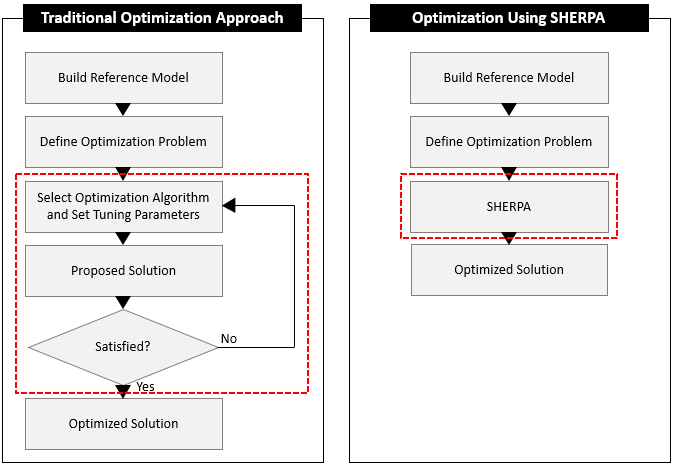The SHERPA Algorithm
SHERPA is a unique search algorithm—it performs a Simultaneous Hybrid Exploration that is Robust, Progressive, and Adaptive.
During a single search, SHERPA uses multiple search methods simultaneously rather than sequentially. This approach uses the best attributes of each search method. If a particular search method is deemed to be ineffective, SHERPA reduces its participation.
A comparison of a traditional optimization approach and of the SHERPA approach is displayed below.

While running the SHERPA algorithm, a combination of global and local search methods are used. At any given time, the number of different methods that are used can range between two and ten. Unlike traditional optimization algorithms that require you to tune parameters manually, the tuning parameters in each method that SHERPA uses are modified automatically during the search. As SHERPA learns more about the design space, it determines when and to what extent to use each search method.
The general advantages of using SHERPA are:
- You need not spend time understanding the design space before choosing a suitable algorithm. SHERPA learns about the design space.
- You do not require any expertise in optimization algorithms and applications. SHERPA makes all the decisions about which method to use and how to tune them.
- You can define realistic problems that are based on real engineering or business costs and benefits, without being constrained by the limitations of a particular search method. With SHERPA, your analysis can contain much broader goals and can include a larger number of variables compared to traditional approaches.